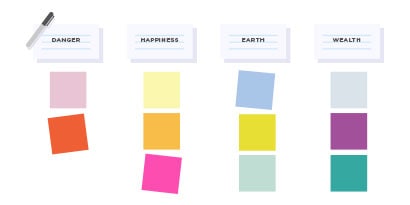
-
There’s a reason Valentines are always red. All across the globe, red is associated with love.
Yet for many other colours, their meanings and associations differ around the world. In the United States, for example, the colour purple is associated with bravery and nobility. Think of the Purple Heart and the great significance it holds! Yet in Brazil, the same colour purple is associated with mourning.
Cultural perceptions of colours are also deeply rooted in idioms. There is no equivalent to “feeling blue” in other languages, yet it is strongly associated in western cultures with a dour mood. And while in English one is “green” with envy, in Germany one is “yellow” with it.
Still, colour meaning isn’t always constant, no matter what country of origin. In the United States, for example, pink was associated with baby boys throughout the 19th century.
Activity
-

Choose 15 different colours of Post-it® Super Sticky Notes. Now, write down a list of associations: danger; happiness; trust; wealth; sophistication, etc. Organise the colours under the associations you have with them. Now, try to switch up the colours, organising them under different associations. Does it make sense? Can you imagine seeing the world that way?
How does culture’s use of colour impact how you see the world?
Share your thoughts on Facebook and let others know how you experienced the activity!

